
Day 13, Sunday 16 March
No Enthusiasm…….. The continuing problem with coronovirus in the UK and worldwide is playing on my mind to the extent that I'm struggling to build any enthusiasm for further activity. However, there's still one full day left which is best spent in Mirissa. In any case I'm psychologically battered and bruised from a tour that has been testing to say the least. I will consider it a victory just to arrive safely in Bangkok. Katoon on the other hand, doesn't see this as a crisis and seems to have a level of immunity from all of this.
We confirm our extra night's stay and take breakfast on the patio. Toast with what they call jam and some fruit is always welcome but I don't think I'll ever get used to the dals and sambals which are usually quite tasteless.
On the Busses…….. After breakfast we head off to the main street in Mirissa. Here we wait for a local bus to Galle. We expect the journey to be about three quarters of an hour. Hopping on the next bus we find the trip straightforward enough, the only transport hub on the way being Weligama, a pleasant enough town with a sandy beach. For most of the route to Galle we are in view of the coast with some of the smaller towns looking quite appealing to a visitor.
Galle…….. source. By the time we reach Galle, almost an hour has passed. Situated on the southwestern tip, 119 km from Colombo, Galle is the administrative capital of Southern Province, Sri Lanka and is the district capital of Galle District.
Galle was known as Gimhathiththa or Qali before the arrival of the Portuguese in the 16th century, when it was the main port on the island. Galle reached the height of its development in the 18th century, during the Dutch colonial period. It is the best example of a fortified city built by the Portuguese in South and Southeast Asia, showing the interaction between Portuguese architectural styles and native traditions. The city was extensively fortified by the Dutch during the 17th century from 1649 onwards. The Galle fort is a world heritage site and is the largest remaining fortress in Asia built by European occupiers.
Other prominent landmarks in Galle include the city's natural harbour, the National Maritime Museum, St. Mary's Cathedral founded by Jesuit priests, one of the main Shiva temples on the island, and Amangalla, the historic luxury hotel. On 26 December 2004, the city was devastated by the massive tsunami caused by the 2004 Indian Ocean earthquake, which occurred off the coast of Indonesia a thousand miles away. Thousands were killed in the city alone. Galle is home to the Galle International Stadium, which is considered to be one of the most picturesque cricket grounds in the world. The ground, which was severely damaged by the tsunami, was rebuilt and test matches resumed there on 18 December 2007.
Important natural geographical features in Galle include Rumassala in Unawatuna, a large mound-like hill that forms the eastern protective barrier to Galle Harbour. Local tradition associates this hill with some events of Ramayana, one of the great Hindu epics. The major river in the area is the Gin River (Gin Ganga), which begins from Gongala Kanda, passes villages such as Neluwa, Nagoda, Baddegama, Thelikada and Wakwella, and reaches the sea at Ginthota. The river is bridged at Wakwella by the Wakwella Bridge.
From the bus station, we decide to take a tuk tuk from to the fort and the surrounding area near the lighthouse. This creates a tour of at least an hour while I appreciate the historic significance of Galle during Colonial times.
While we manage to dodge a rain shower, it's quite hot today. There's no point in dotting i's and crossing tees here now as we hop onto the next bus heading to Matara. Heading though Mirissa, we continue onto Matara to see what this city has to offer.
Matara…….. Matara lies on the southern coast of Southern Province, 160 km from Colombo. It is a major commercial hub, and it is the administrative capital of Matara District.
Matara historically belongs to the area that was called the Kingdom of Ruhuna, which was one of the three kingdoms in Sri Lanka. According to Thotagamuwe Sri Rahula Thera's Paravi Sndesaya, King Weerabamapanam made Matara as his capital and named it "Mapatuna". The temple in the middle of the town is also built by ancient kings, and now it is a very popular sacred place among the Buddhists in the area.
In the 16th and 18th centuries, Matara was ruled by the Portuguese and the Dutch respectively.
In 1756 the Dutch captured the Maritime Province and divided it into four administrative areas — Sabaragamuwa, Sath Korle, Sathara Korele and Matara. Out of these, Matara District covered the largest area (essentially the whole of the Southern Province up to the Kaluganga River). In the deed given by King Dharmapala to the Dutch, it mentioned that the area of Matara District extended from Kotte to Walawe Ganga River.
In 1760 the fort was successfully attacked by forces from the Kandyan kingdom. Matara maintained in the hands of the Sinhalese for almost one year. In 1762, the Dutch recaptured Matara Fort, without any significant resistance. Matara was the second most important fort, behind Galle fort, for the southern maritime provinces of the Dutch and a commanding base for some inland forts.
In 1796 the fort was ceremoniously handed over to the British. The Dutch and English culture and architecture can still be seen throughout the area. The lighthouse at Dondra Head was built by the Dutch, and it is considered one of the oldest lighthouses in Sri Lanka. The two fortresses, the Matara fort and the Star fort, that were built by the Dutch can be found in the city. Other important Colonial works are the St Mary's Church and the marketplace at Nupe Junction.
The ethnic majority of Matara is Sinhalese; during the 16th and 17th centuries Moors arrived in the area as traders from Arabia. Today their descendants coexist with Sinhalese peacefully as an ethnic minority.
Matara is a busy, booming and sprawling commercial town that owes almost nothing to tourism – which can make it a fascinating window on modern Sri Lankan life. Matara's main attractions are its ramparts, Dutch architecture, a well-preserved fort and its street life. The attractions of interest include:
1) Parey Dewa (Rock in Water) or Paravi Dupatha temple, a relatively modern Buddhist temple on Pigeon Island.
2) Weragampita Rajamaha Viharaya Temple.
3) Matara Bodhiya, a Buddhist temple, which is the site of a sacred fig tree.
4) Matara fort/ramparts: The Matara fort was built in 1560 by the Portuguese and was substantially re-built by the Dutch in 1640, following the capture of Galle. The fort, which consists of a large stone rampart, occupies the promontory, which separates the Niwala River lagoon and the ocean.
5) Dutch Reformed Church, Matara was constructed within Matara fort by the Dutch in 1706. It was extensively remodelled in 1767, following the recapture of the fort in 1762.
6) Star Fort is on the western or landward side of the Nawali River. The fort was constructed by the Dutch following the Matara rebellion in 1761, to protect the main fort from attacks originating from the river. Construction of the unique star-shaped fort was completed in 1765.
7) Old Nupe Market was constructed in 1784 by the Dutch, about 3.2 kilometres (2.0 mi) from Matara fort.
8) St Mary's Church is on Beach Road. The date on the doorway (1769) refers to the reconstruction following the 1762 Matara Rebellion.
Despite some interesting history in Matara, we use up half of our stay in a bakery consuming pasties and coffee, something we do enjoy. However, the central area near the bus station where the fort is located provides and opportunity to learn something of the city's history and reinforce my understanding of Sri Lankan history as a whole.
Summing Up…….. It's time to return to Mirissa by the same bus service which is not unproductive. The coastline is in view for a large part of the time; an area badly affected be the Asian Tsunami of 2004. The south coast does have a modest number of foreign tourists and has ample numbers of restaurants, hotels and guesthouses while the beaches are generally clean. However, on a point I intend to expand on in conclusion, this is still a backpacker destination providing rooms cheap enough to meet these needs. Better class hotels are springing up though but you will find yourself in an 'oasis in the desert'. The tourist infrastructure just does not exist with government investment sadly lacking. This is partly compensated for by private initiatives which are applied vigorously to say the least; tuk tuk drivers being the most obvious. Another option is to rent a motorbike for local travel but this can be dangerous with poor regard for road safely. Overall, with regards to Sri Lanka's south coast, I have to stick my neck out and say that for the money there are far nicer places to visit.
Beer and Breeze…….. Finally this evening I manage to get in touch with Diane (my sister) via facebook. After a long conversation, a number of issues arising from my absence from the UK are fixed. Cancelling a number of appointments I regard as non-essential during the Covid-19 outbreak and seeing to a maintenance issue reduces the number of concerns leaving me with more flexibility. Finding a wine shop yesterday, I decide that a couple of beers will do no harm under the circumstances, the price quite reasonable. As I turn in for my last night’s stay in Sri Lanka my mood shows some improvement but tomorrow is key to my future plans.
The days ends back at Mirissa Breeze with a couple of strong beers to quell the nerves. Tomorrow I head to the airport and I say 'Amen' to that.
Next Page.
No Enthusiasm…….. The continuing problem with coronovirus in the UK and worldwide is playing on my mind to the extent that I'm struggling to build any enthusiasm for further activity. However, there's still one full day left which is best spent in Mirissa. In any case I'm psychologically battered and bruised from a tour that has been testing to say the least. I will consider it a victory just to arrive safely in Bangkok. Katoon on the other hand, doesn't see this as a crisis and seems to have a level of immunity from all of this.
We confirm our extra night's stay and take breakfast on the patio. Toast with what they call jam and some fruit is always welcome but I don't think I'll ever get used to the dals and sambals which are usually quite tasteless.
On the Busses…….. After breakfast we head off to the main street in Mirissa. Here we wait for a local bus to Galle. We expect the journey to be about three quarters of an hour. Hopping on the next bus we find the trip straightforward enough, the only transport hub on the way being Weligama, a pleasant enough town with a sandy beach. For most of the route to Galle we are in view of the coast with some of the smaller towns looking quite appealing to a visitor.
Galle…….. source. By the time we reach Galle, almost an hour has passed. Situated on the southwestern tip, 119 km from Colombo, Galle is the administrative capital of Southern Province, Sri Lanka and is the district capital of Galle District.
Galle was known as Gimhathiththa or Qali before the arrival of the Portuguese in the 16th century, when it was the main port on the island. Galle reached the height of its development in the 18th century, during the Dutch colonial period. It is the best example of a fortified city built by the Portuguese in South and Southeast Asia, showing the interaction between Portuguese architectural styles and native traditions. The city was extensively fortified by the Dutch during the 17th century from 1649 onwards. The Galle fort is a world heritage site and is the largest remaining fortress in Asia built by European occupiers.
Other prominent landmarks in Galle include the city's natural harbour, the National Maritime Museum, St. Mary's Cathedral founded by Jesuit priests, one of the main Shiva temples on the island, and Amangalla, the historic luxury hotel. On 26 December 2004, the city was devastated by the massive tsunami caused by the 2004 Indian Ocean earthquake, which occurred off the coast of Indonesia a thousand miles away. Thousands were killed in the city alone. Galle is home to the Galle International Stadium, which is considered to be one of the most picturesque cricket grounds in the world. The ground, which was severely damaged by the tsunami, was rebuilt and test matches resumed there on 18 December 2007.
Important natural geographical features in Galle include Rumassala in Unawatuna, a large mound-like hill that forms the eastern protective barrier to Galle Harbour. Local tradition associates this hill with some events of Ramayana, one of the great Hindu epics. The major river in the area is the Gin River (Gin Ganga), which begins from Gongala Kanda, passes villages such as Neluwa, Nagoda, Baddegama, Thelikada and Wakwella, and reaches the sea at Ginthota. The river is bridged at Wakwella by the Wakwella Bridge.
From the bus station, we decide to take a tuk tuk from to the fort and the surrounding area near the lighthouse. This creates a tour of at least an hour while I appreciate the historic significance of Galle during Colonial times.
While we manage to dodge a rain shower, it's quite hot today. There's no point in dotting i's and crossing tees here now as we hop onto the next bus heading to Matara. Heading though Mirissa, we continue onto Matara to see what this city has to offer.
Matara…….. Matara lies on the southern coast of Southern Province, 160 km from Colombo. It is a major commercial hub, and it is the administrative capital of Matara District.
Matara historically belongs to the area that was called the Kingdom of Ruhuna, which was one of the three kingdoms in Sri Lanka. According to Thotagamuwe Sri Rahula Thera's Paravi Sndesaya, King Weerabamapanam made Matara as his capital and named it "Mapatuna". The temple in the middle of the town is also built by ancient kings, and now it is a very popular sacred place among the Buddhists in the area.
In the 16th and 18th centuries, Matara was ruled by the Portuguese and the Dutch respectively.
In 1756 the Dutch captured the Maritime Province and divided it into four administrative areas — Sabaragamuwa, Sath Korle, Sathara Korele and Matara. Out of these, Matara District covered the largest area (essentially the whole of the Southern Province up to the Kaluganga River). In the deed given by King Dharmapala to the Dutch, it mentioned that the area of Matara District extended from Kotte to Walawe Ganga River.
In 1760 the fort was successfully attacked by forces from the Kandyan kingdom. Matara maintained in the hands of the Sinhalese for almost one year. In 1762, the Dutch recaptured Matara Fort, without any significant resistance. Matara was the second most important fort, behind Galle fort, for the southern maritime provinces of the Dutch and a commanding base for some inland forts.
In 1796 the fort was ceremoniously handed over to the British. The Dutch and English culture and architecture can still be seen throughout the area. The lighthouse at Dondra Head was built by the Dutch, and it is considered one of the oldest lighthouses in Sri Lanka. The two fortresses, the Matara fort and the Star fort, that were built by the Dutch can be found in the city. Other important Colonial works are the St Mary's Church and the marketplace at Nupe Junction.
The ethnic majority of Matara is Sinhalese; during the 16th and 17th centuries Moors arrived in the area as traders from Arabia. Today their descendants coexist with Sinhalese peacefully as an ethnic minority.
Matara is a busy, booming and sprawling commercial town that owes almost nothing to tourism – which can make it a fascinating window on modern Sri Lankan life. Matara's main attractions are its ramparts, Dutch architecture, a well-preserved fort and its street life. The attractions of interest include:
1) Parey Dewa (Rock in Water) or Paravi Dupatha temple, a relatively modern Buddhist temple on Pigeon Island.
2) Weragampita Rajamaha Viharaya Temple.
3) Matara Bodhiya, a Buddhist temple, which is the site of a sacred fig tree.
4) Matara fort/ramparts: The Matara fort was built in 1560 by the Portuguese and was substantially re-built by the Dutch in 1640, following the capture of Galle. The fort, which consists of a large stone rampart, occupies the promontory, which separates the Niwala River lagoon and the ocean.
5) Dutch Reformed Church, Matara was constructed within Matara fort by the Dutch in 1706. It was extensively remodelled in 1767, following the recapture of the fort in 1762.
6) Star Fort is on the western or landward side of the Nawali River. The fort was constructed by the Dutch following the Matara rebellion in 1761, to protect the main fort from attacks originating from the river. Construction of the unique star-shaped fort was completed in 1765.
7) Old Nupe Market was constructed in 1784 by the Dutch, about 3.2 kilometres (2.0 mi) from Matara fort.
8) St Mary's Church is on Beach Road. The date on the doorway (1769) refers to the reconstruction following the 1762 Matara Rebellion.
Despite some interesting history in Matara, we use up half of our stay in a bakery consuming pasties and coffee, something we do enjoy. However, the central area near the bus station where the fort is located provides and opportunity to learn something of the city's history and reinforce my understanding of Sri Lankan history as a whole.
Summing Up…….. It's time to return to Mirissa by the same bus service which is not unproductive. The coastline is in view for a large part of the time; an area badly affected be the Asian Tsunami of 2004. The south coast does have a modest number of foreign tourists and has ample numbers of restaurants, hotels and guesthouses while the beaches are generally clean. However, on a point I intend to expand on in conclusion, this is still a backpacker destination providing rooms cheap enough to meet these needs. Better class hotels are springing up though but you will find yourself in an 'oasis in the desert'. The tourist infrastructure just does not exist with government investment sadly lacking. This is partly compensated for by private initiatives which are applied vigorously to say the least; tuk tuk drivers being the most obvious. Another option is to rent a motorbike for local travel but this can be dangerous with poor regard for road safely. Overall, with regards to Sri Lanka's south coast, I have to stick my neck out and say that for the money there are far nicer places to visit.
Beer and Breeze…….. Finally this evening I manage to get in touch with Diane (my sister) via facebook. After a long conversation, a number of issues arising from my absence from the UK are fixed. Cancelling a number of appointments I regard as non-essential during the Covid-19 outbreak and seeing to a maintenance issue reduces the number of concerns leaving me with more flexibility. Finding a wine shop yesterday, I decide that a couple of beers will do no harm under the circumstances, the price quite reasonable. As I turn in for my last night’s stay in Sri Lanka my mood shows some improvement but tomorrow is key to my future plans.
The days ends back at Mirissa Breeze with a couple of strong beers to quell the nerves. Tomorrow I head to the airport and I say 'Amen' to that.
Next Page.
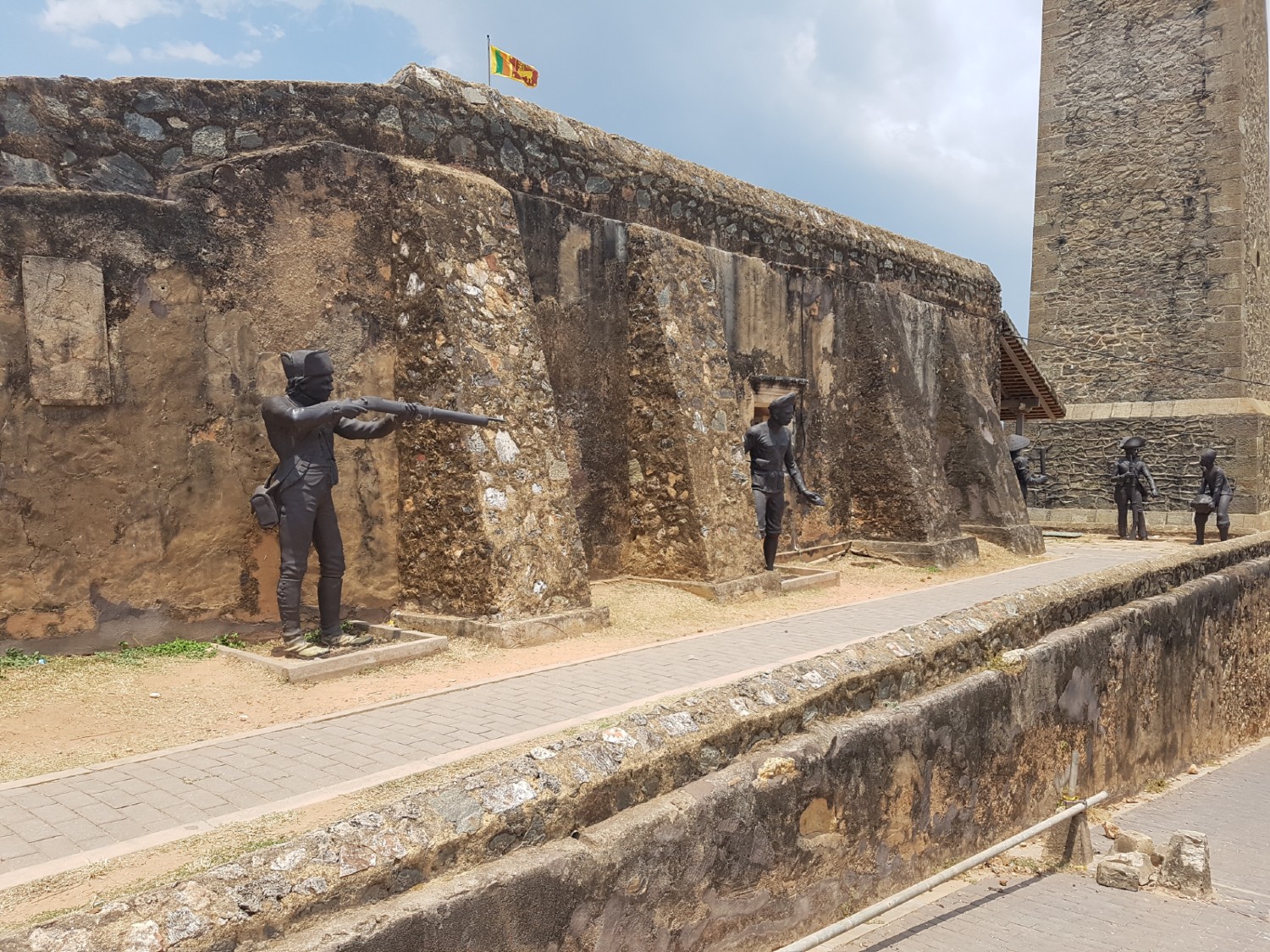

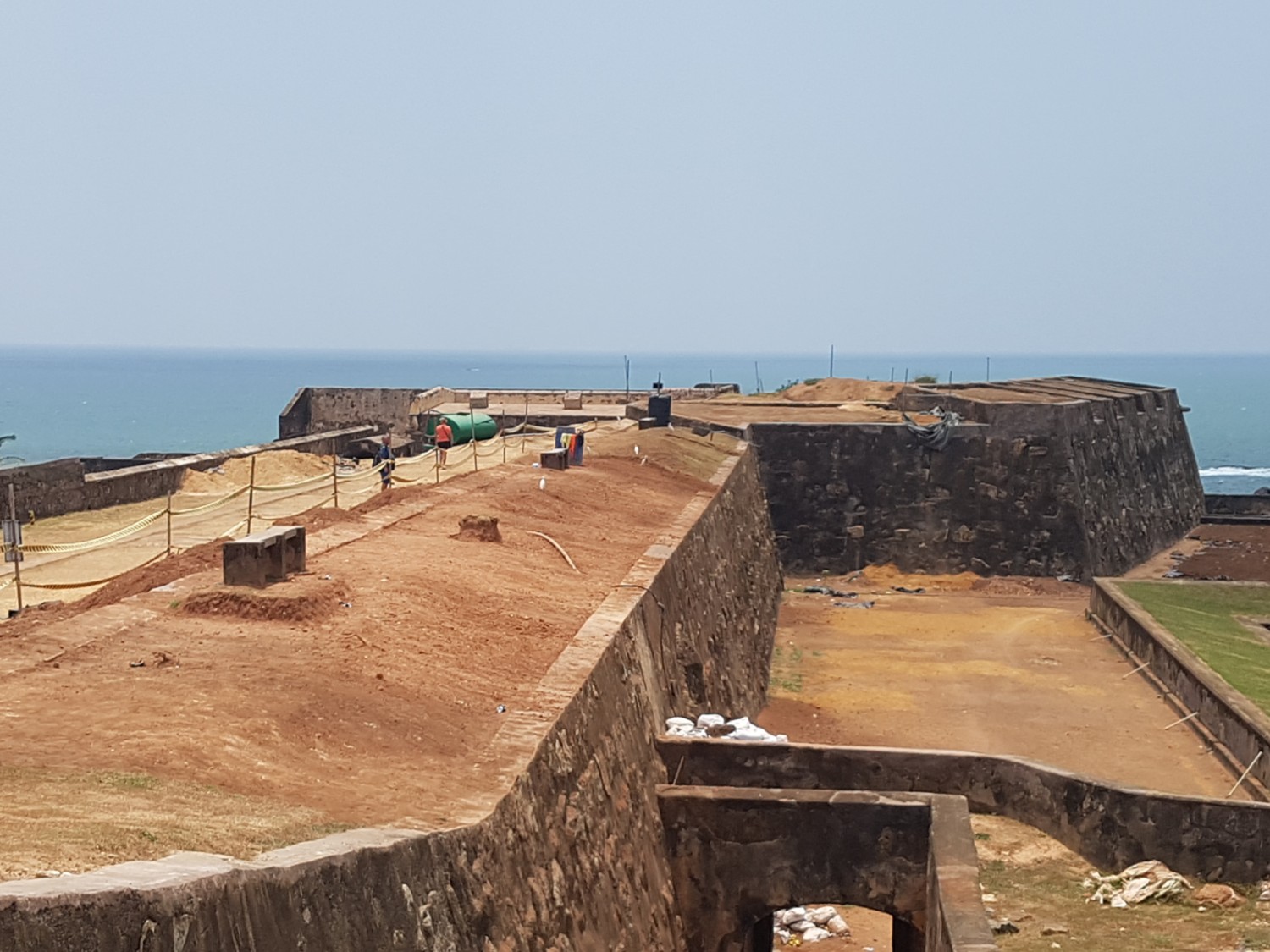
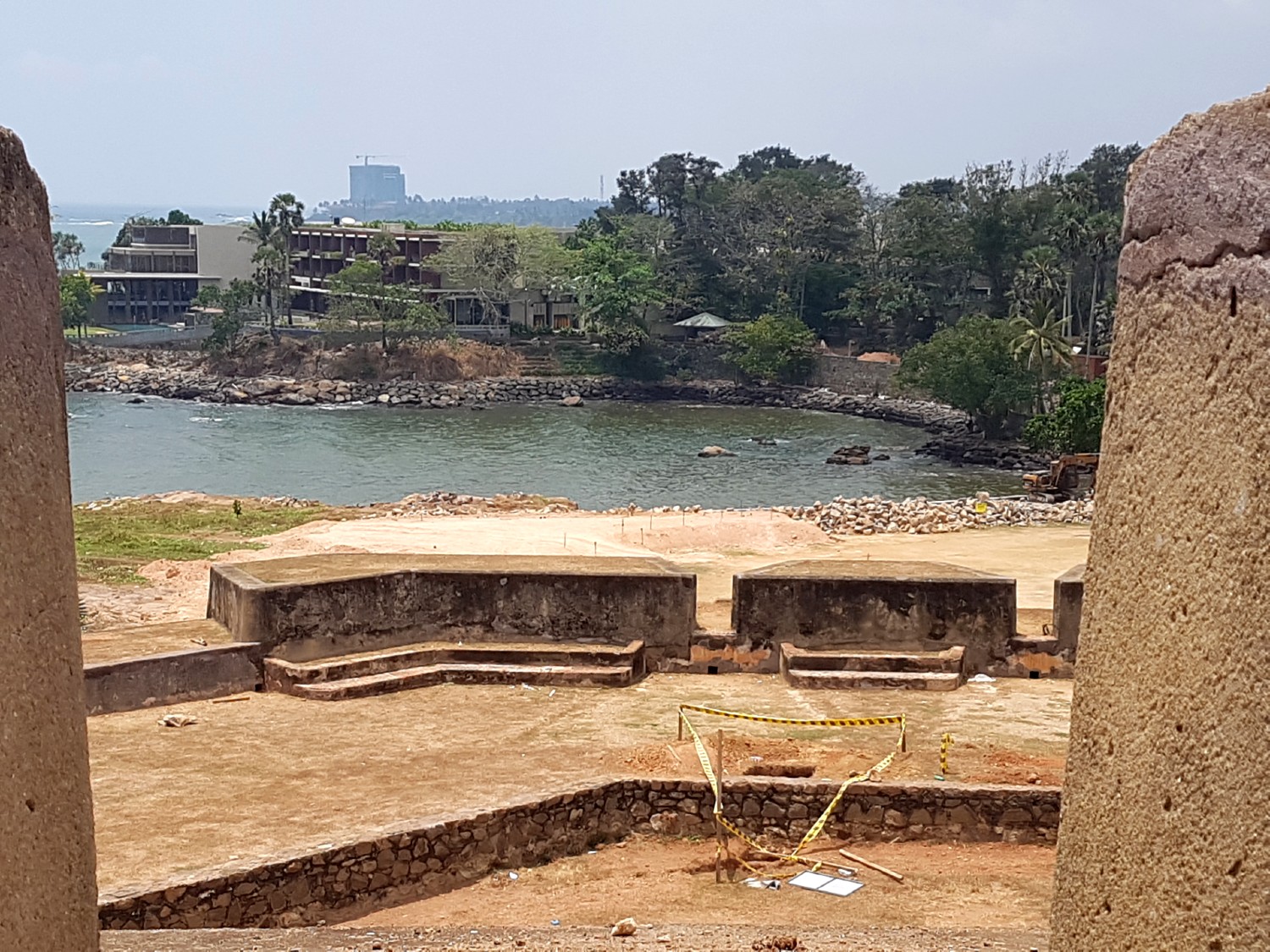

Galle Fort, Galle
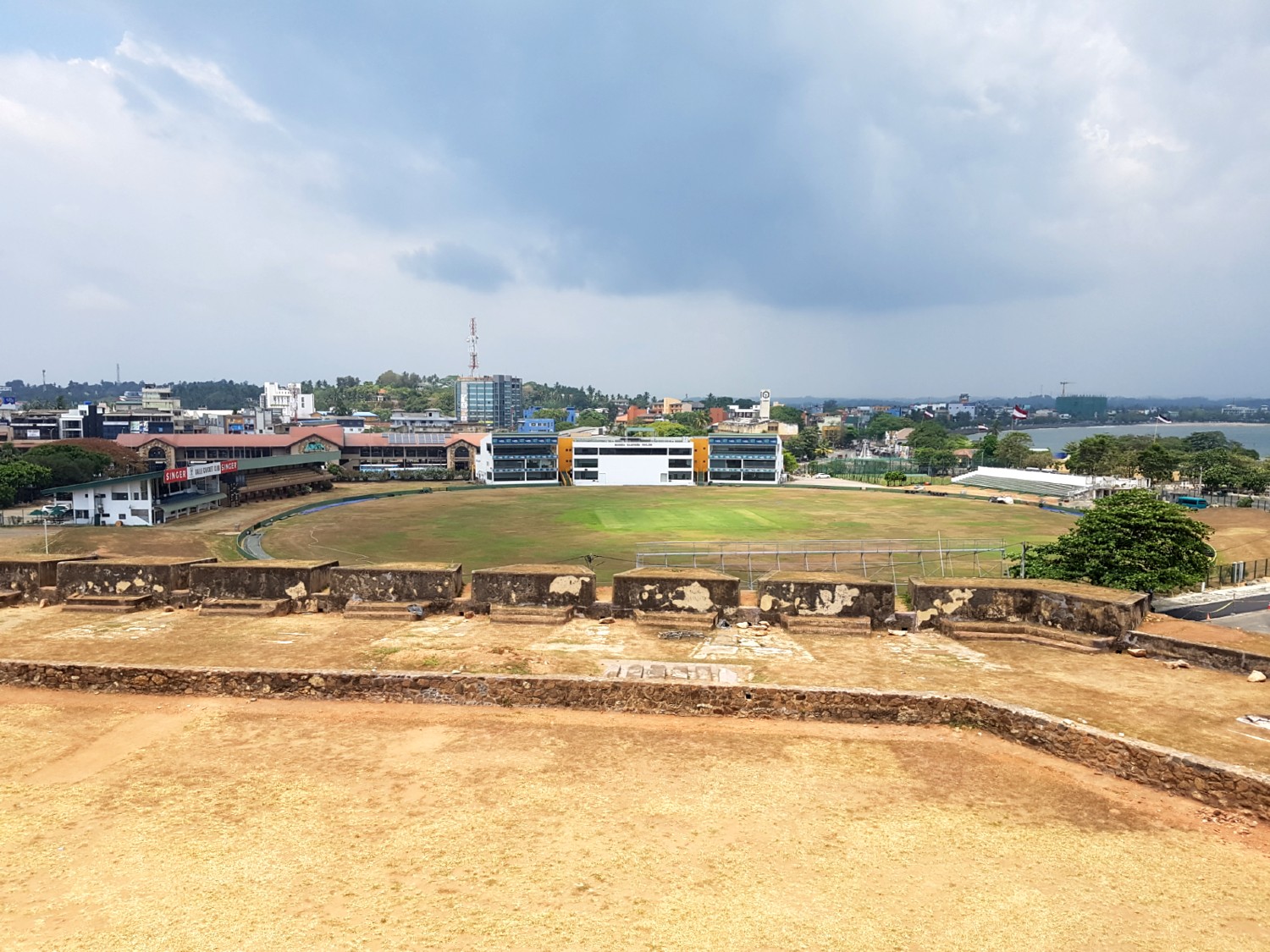
Galle Cricket Ground, Galle
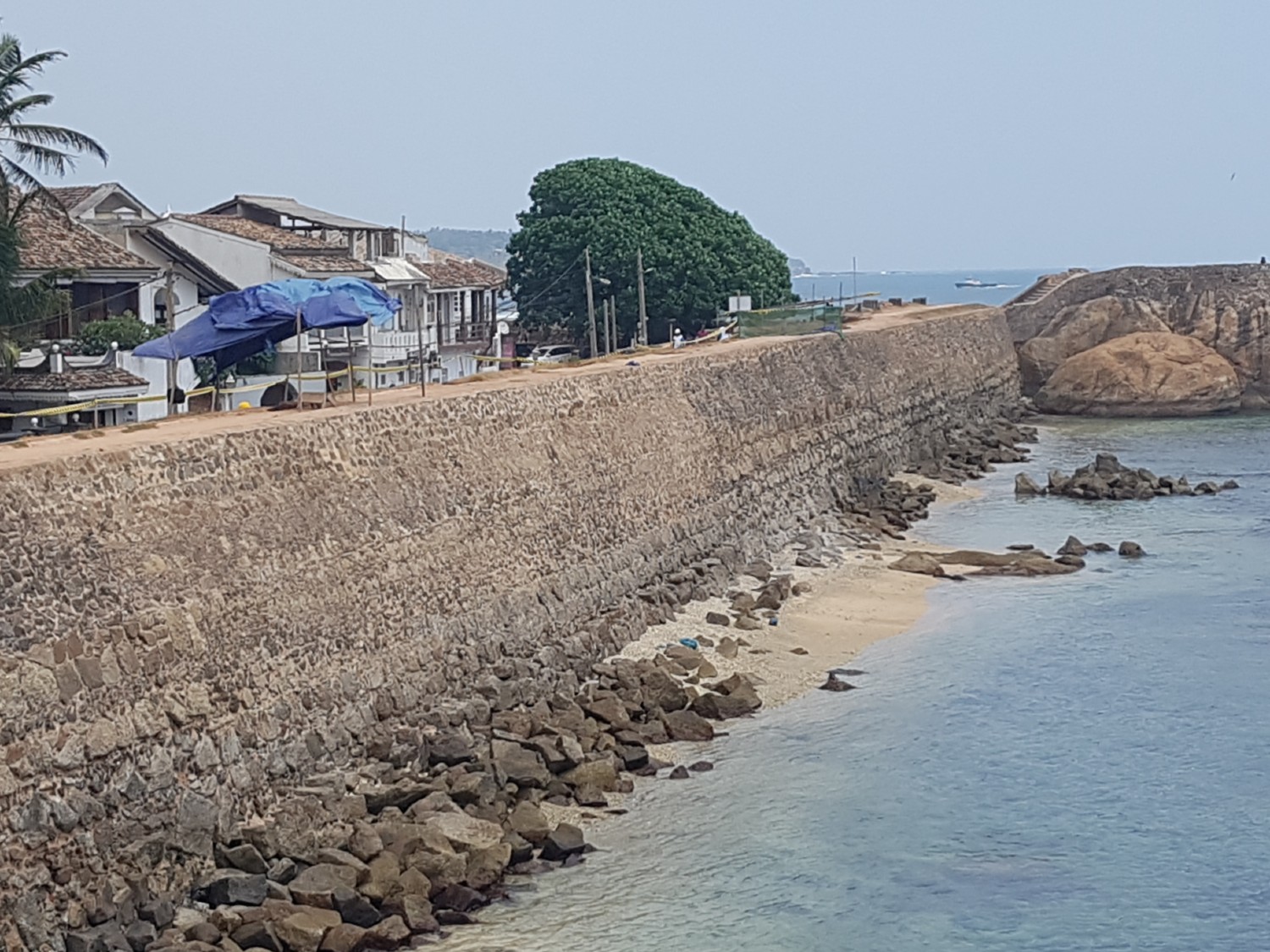
Bastion Wall leading to Flag Rock Bastion, Galle Fort, Galle
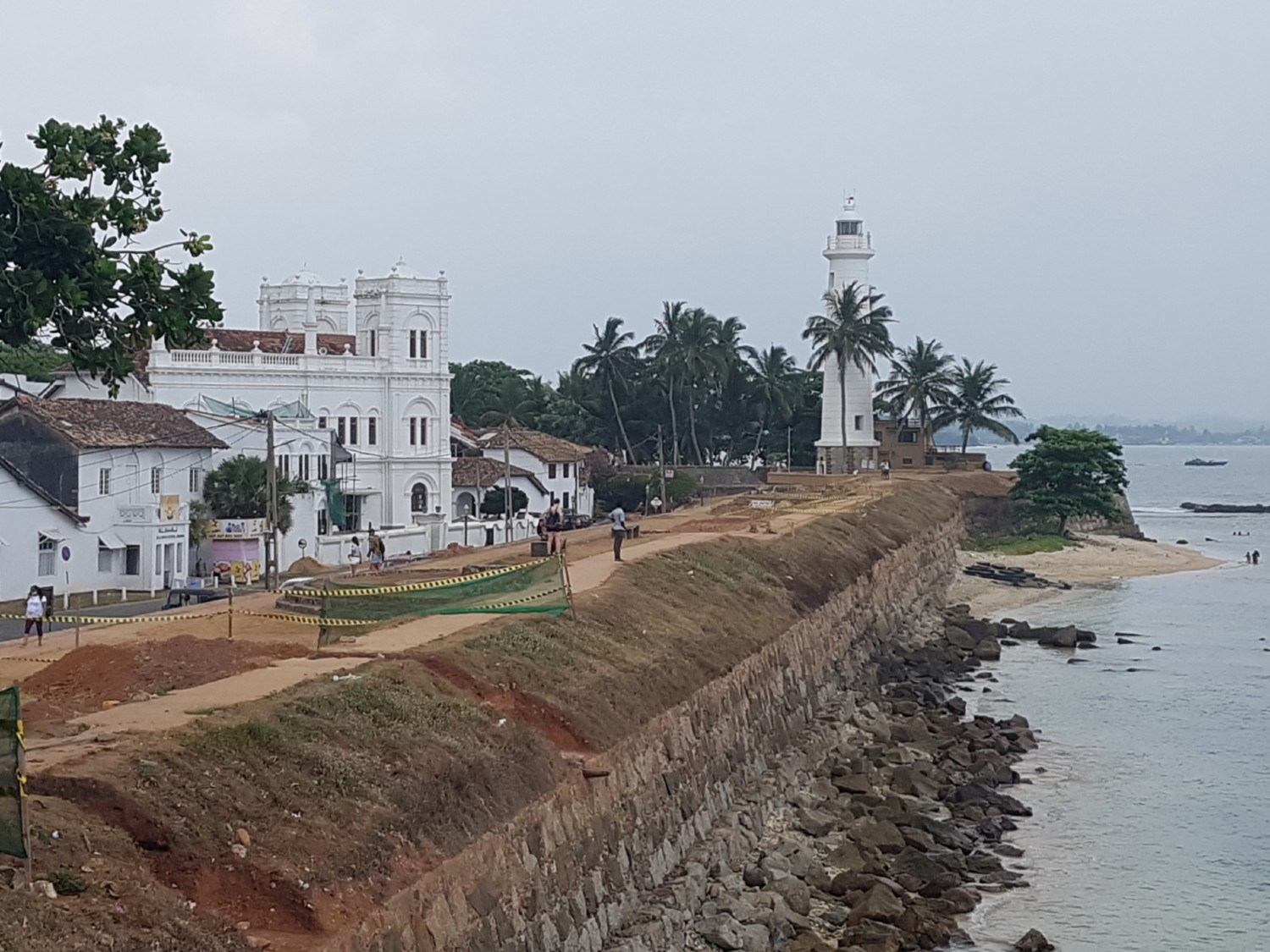

Galle Fort Lighthouse, Galle
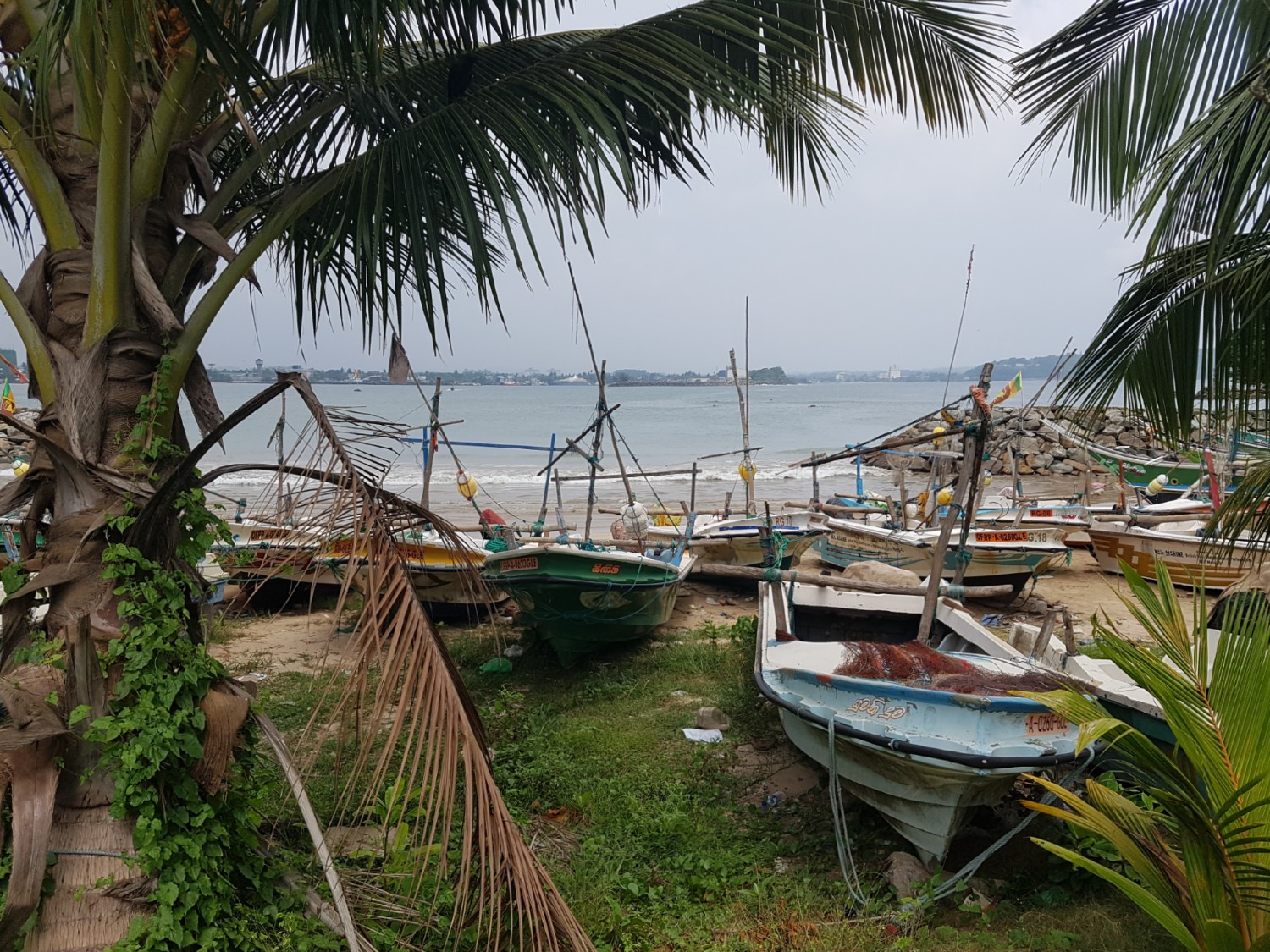
Beach Park Area, Galle
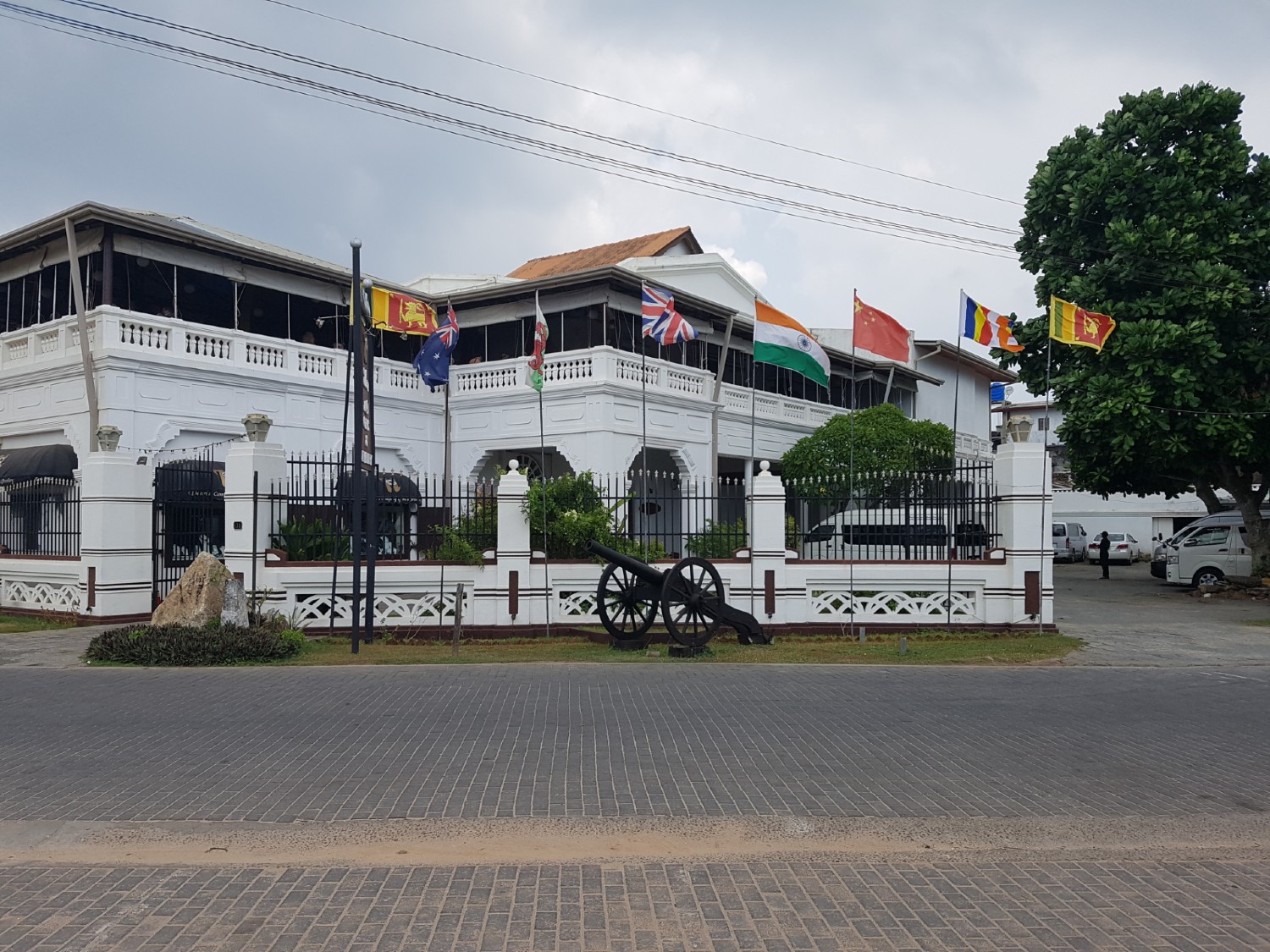
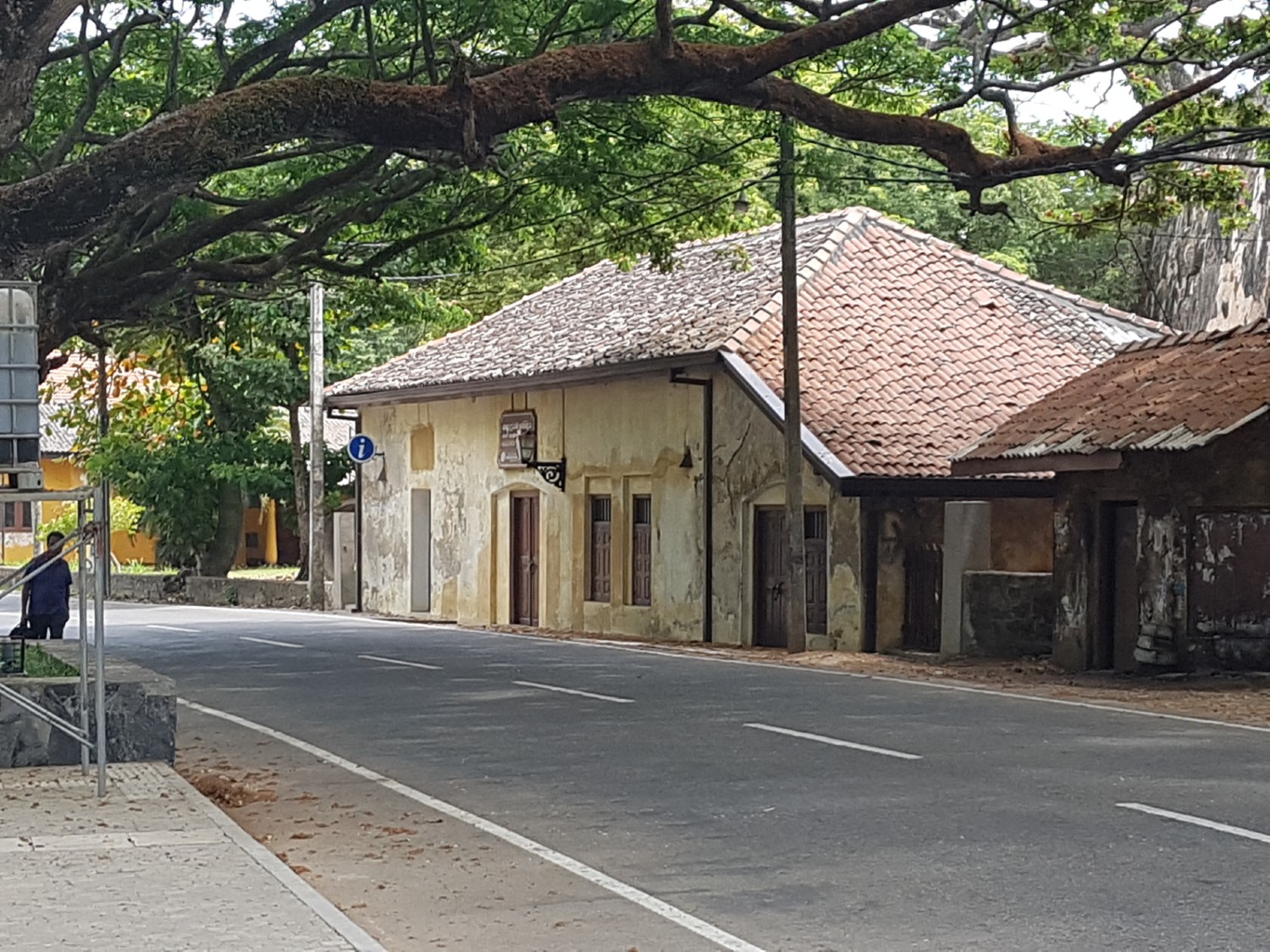
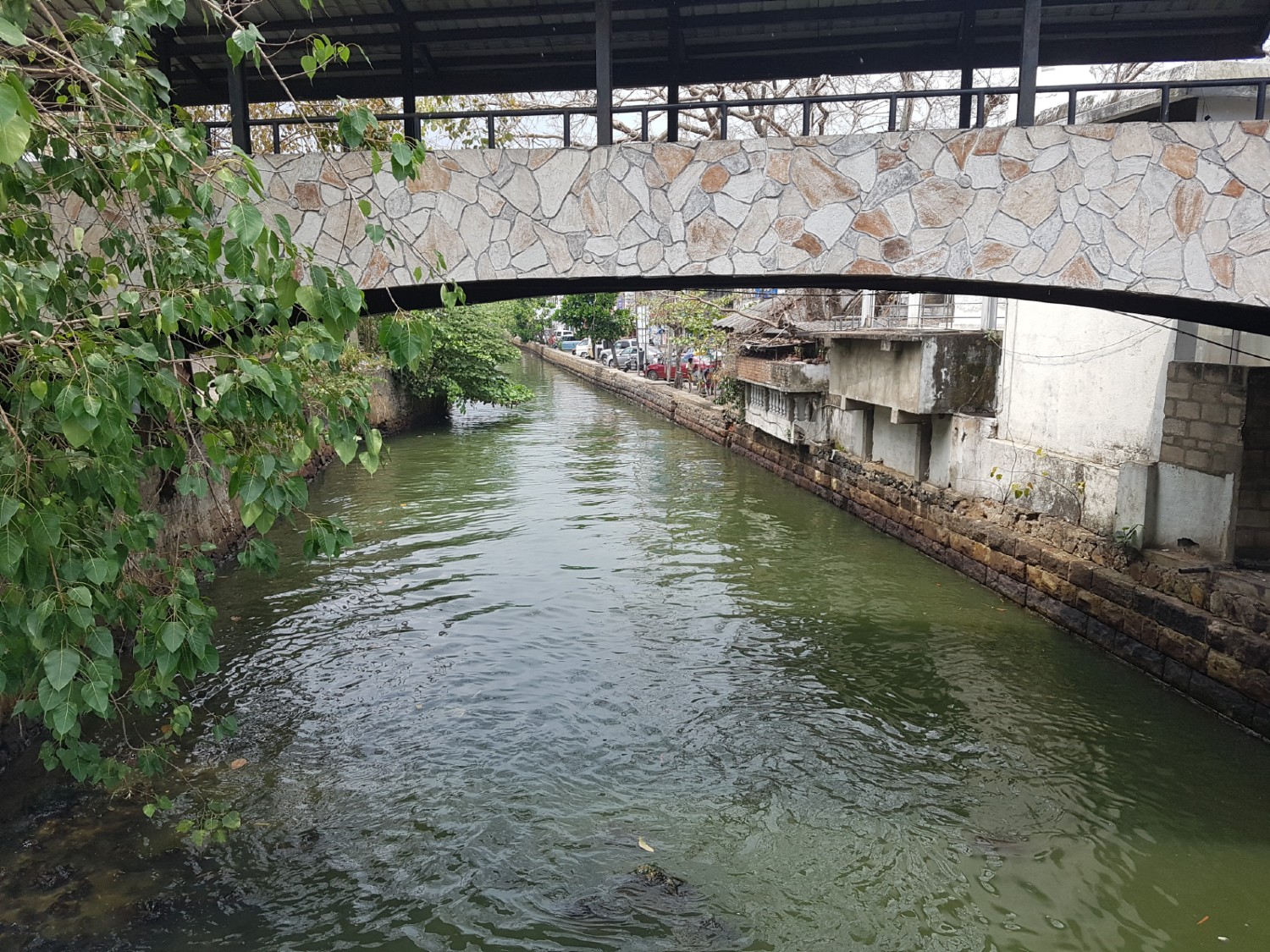
Colonial Buildings, Fort Area, Galle
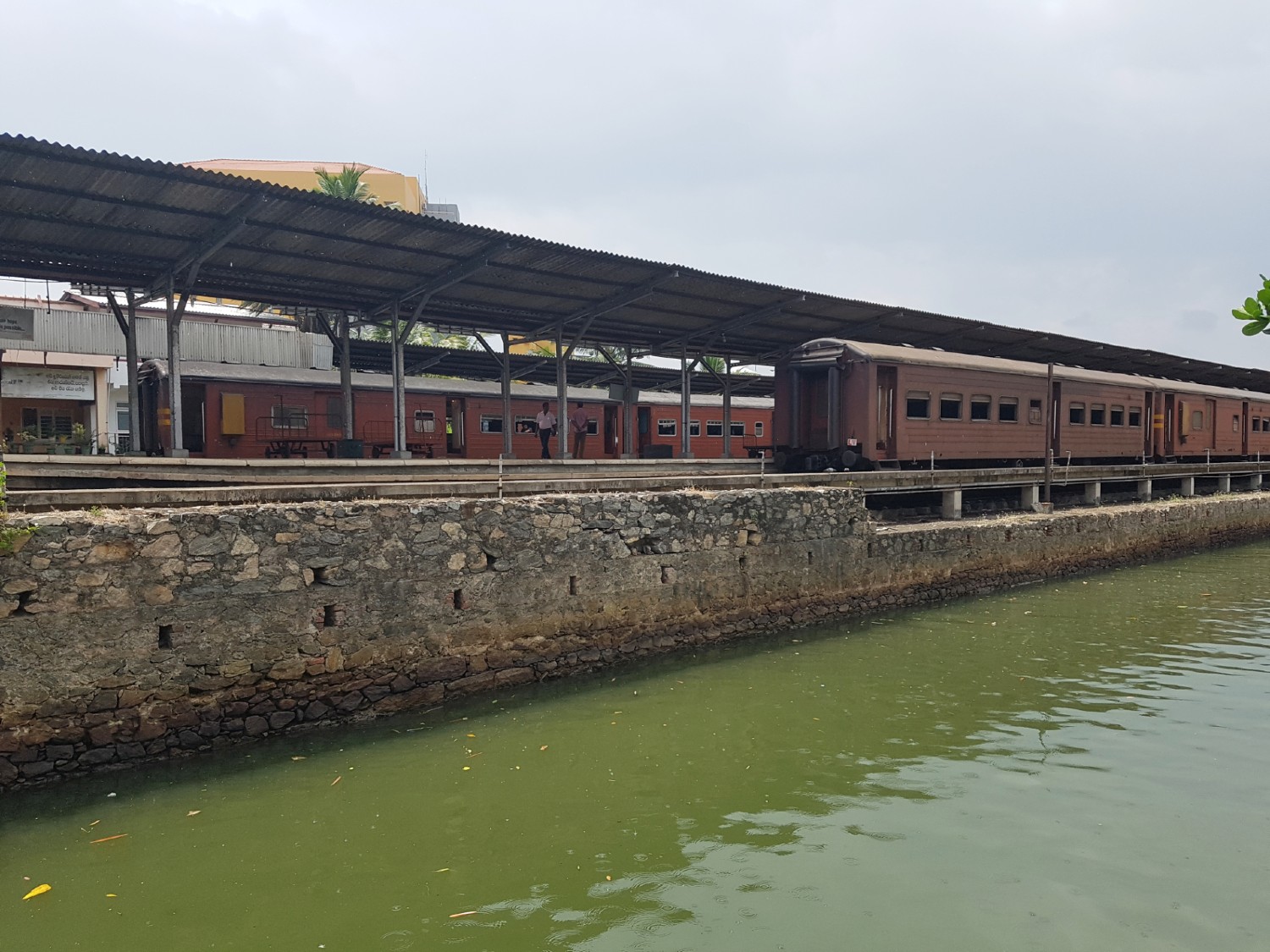
Galle Railway Station, Galle

Paravi Duwa Temple, Matara Beach, Matara
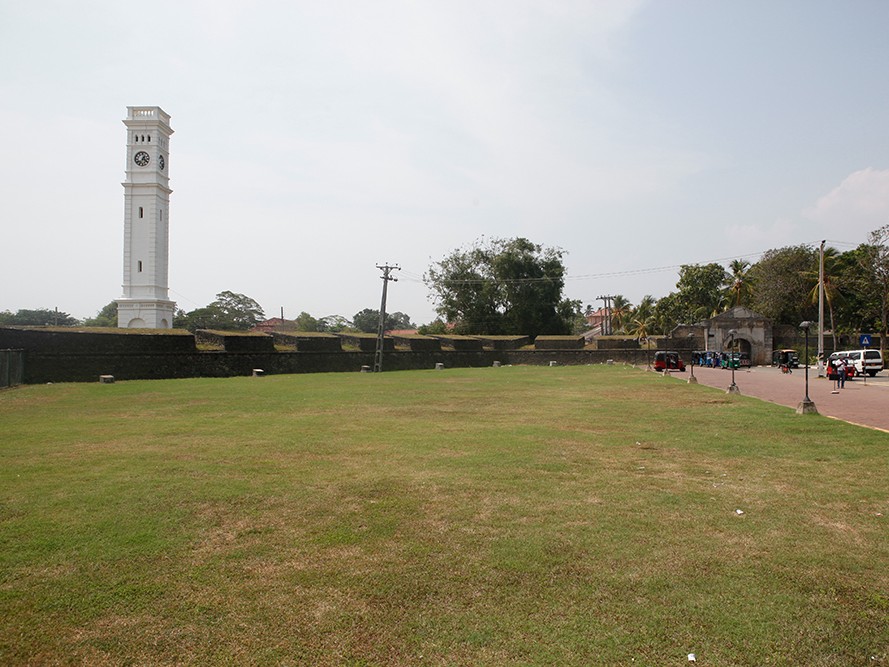
Matara Fort, Matara